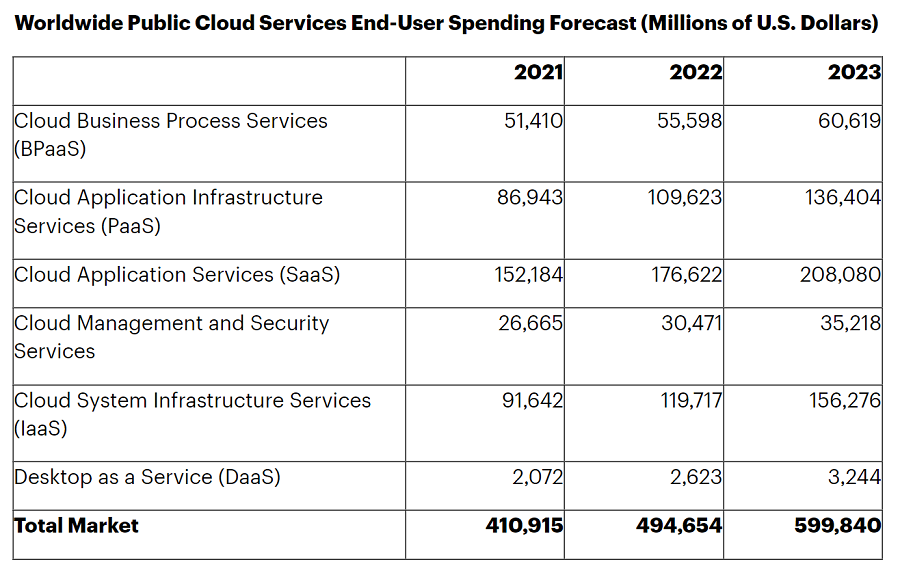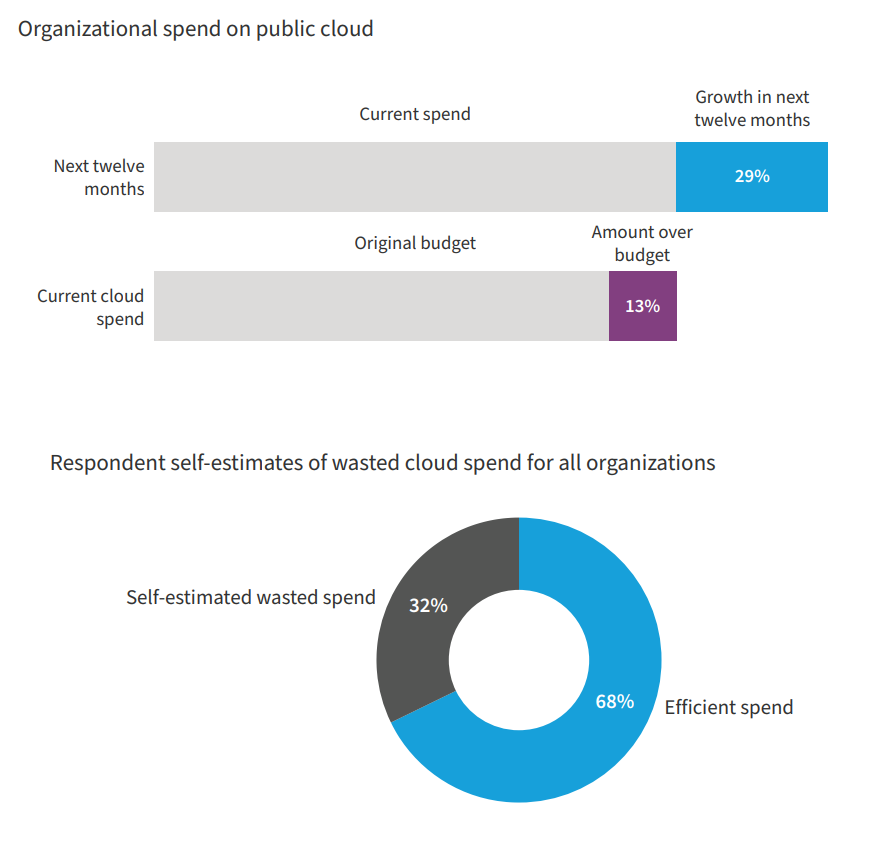The driving factor or primary function of End-User Computing (EUC) is enabling anytime, anywhere access to enterprise data and applications via virtual desktop infrastructure (VDI) that resides either in the public cloud or on-prem at the organization’s data center.
Typically, the enterprise has to create and manage VM sessions for each user, provide high-performance storage and compute support, put in place the network infrastructure to handle large numbers of concurrent sessions, and support a range of client devices including laptops, smartphones and even IoT devices.
The essence of EUC operations, then, is a fluid, almost abstract interaction between the underlying infrastructure and everyday users. This requires the architecture to be agile and scalable, with a control and management plane that isn’t overly complex.
The explosive growth of the public cloud and the lasting shift to remote work in the wake of the pandemic have made Desktop-as-a-Service (DaaS) – the cloud implementation of VDI – a natural choice for EUC. So much so that Gartner projects DaaS to be one of the biggest drivers/recipients of cloud spending.

Source: Gartner
That said, IT leaders are now finding that neither the public cloud nor a fully on-prem architecture overcomes all the challenges of EUC. In fact, a hybrid multicloud deployment has emerged as a preferred operating model for on-demand scalability and flexibility to meet changing EUC needs. TechRepublic cited a survey of over 1,000 IT companies planning to implement EUC technologies – nearly 80% of respondents said they intended to deploy a combination of on-prem and public cloud services for desktop and application virtualization.
“CIOs are beyond the era of irrational exuberance of procuring cloud services and are being thoughtful in their choice of public cloud providers to drive specific, desired business and technology outcomes in their digital transformation journey,” affirmed Sid Nag, VP of Research at Gartner.
In another instance, the End User Computing: State of the Union study by VDI Like A Pro found that nearly of half of all EUC solutions already use a hybrid environment.
Ruben Spruijt, one of the authors of the study, also advocates a cloud-smart mindset as opposed to a cloud-first one.
“A cloud-smart mindset means that you use the right tool for the right job,” said Spruijt.
“Sometimes the job is suited for the public cloud, and sometimes the job is much better suited for on-premises. That’s why I believe that hybrid is the future.”
The question for IT decision-makers then is, does a hybrid infrastructure help put EUC-intensive workloads in the best environment, whether it is on-prem or cloud? If so, what are some compelling motives for companies to adopt hybrid, multicloud EUC solutions?
Cost Efficiency and Optimization
As noted above, there is a constant pull and push to move workloads between cloud and on-prem. One of the primary factors driving this is cost optimization of IT infrastructures. Even as multicloud systems garner more of the IT budget, organizations are still wasting about a third of their cloud spend, according to a report from Flexera.

Source: Flexera State of the Cloud 2022
This has led many organizations to discover that a hybrid architecture might be more suitable for their workloads – they always have the option of cloud bursting for usage spikes. When operational complexity is cut down and idle resources are pruned, costs invariably come down.
Further, avoiding vendor lock-in also contributes indirectly to cost governance. A Gartner survey found that 81% of enterprises use two or more cloud providers primarily for this reason.
“Most organizations adopt a multicloud strategy out of a desire to avoid vendor lock-in or to take advantage of best-of-breed solutions,” said Michael Warrilow, VP Analyst at Gartner. “We expect that most large organizations will continue to wilfully pursue this approach.”
Data Security
EUC and VDI deployments in a hybrid architecture can mitigate security threats to a great extent, given that critical data is always stored on-prem or in a private cloud. Even though endpoints are the weakest links in the system, an attacker can’t do much by taking control of the user’s device.
By implementing best practices in application segmentation and isolation, identity and access management (IAM), zero trust architecture (ZTA), automated monitoring and data encryption, admins can prevent attackers from infiltrating live sessions and injecting malware or ransomware into the network.
Often, convincing the C-suite of the security advantage is the simplest route to implementing their EUC architecture of choice for IT leaders.
“Once I was able to quantify the risk regarding $28 billion in assets and provide clear and concise information regarding risk, we finally got the buy-in that was needed,” said Michael Wyatt, lead architect at Vodafone, after implementing a hybrid infrastructure involving VDI, HCI, and the public cloud, with a ZTA security plan for over 50,000 users.
“We simply could not put the complete set of security controls in place with the way it was architected,” Wyatt told The Forecast. “Since then, from an on-prem, hybrid infrastructure perspective, we have settled on Nutanix, at the core.”
“Single Pane of Glass” Management
A cloud management platform gives admins the advantage of a unified console and GUI that controls services and resources across the on-prem and cloud environments. They get a single view of all resources, assets and services and can manage security, data usage, storage, server operations, routing and so on centrally.
Availability & Disaster Recovery
VDI and DaaS deployments typically have inherent load balancing and redundancy features. A centrally managed hybrid architecture enables IT admins to control the replication frequency of business-critical data. In the event of a disaster, the data restored to the VDI is almost always up-to-date (because of near-real-time backups and replication) unlike in a legacy environment.
Data Privacy and Control
Perhaps the biggest consideration while planning and deploying an EUC system in today’s environment is data privacy and regulatory compliance. There is always a trade-off between visibility, flexibility, security and control of data.
In highly-regulated industries such as healthcare, finance, legal, government and telecom, a hybrid architecture provides granular control over end users’ desktops, eliminating the possibility of sensitive data being stored on private machines.
The hybrid cloud enables architects to account for data storage and transfer regulations across diverse geographic regions that fall under different national laws.
“For sure, there are customers who cannot use certain cloud services, from a regulation perspective, but that group is shrinking,” said Spruijt. “Even in countries like Germany where, two or three years ago, the cloud was a ‘no-go,’ things are slowly changing.”
Workload Portability
Because of the advantages in cloud performance, application resiliency, availability and scalability, perhaps the biggest advantage that a hybrid infrastructure offers EUC is workload portability – it enables the organization to provide simplified and flexible UX to employees, vendors and customers while meeting compliance and security requirements.
IT and development teams can take a nuanced and granular approach to develop and host applications in a public or private cloud to take advantage of the different aspects of each environment, leading to huge benefits in performance.
For example, a Nutanix-powered hyperconverged infrastructure (HCI) allows for rapid provisioning of high-performance resources for a distributed workforce – IT can burst up to 2,000 virtual apps and desktops on Nutanix Clusters from private cloud to public cloud in under two hours. Nutanix Frame is a true hybrid multicloud DaaS solution that helps overcome the complexity of traditional VDI solutions while streamlining operations at scale.
New Complexities, New Solutions
2023 promises to be a year where the post-pandemic world settles in and a whole new host of “long-lasting” challenges and opportunities come to light in remote and distributed work practices. What won’t go away is the need for flexibility, security and scalability. Obviously, business priorities will go beyond just keeping the lights on.
“Driven by the maturation of core cloud services, the focus of differentiation is gradually shifting to capabilities that can disrupt digital businesses and operations in enterprises directly,” said Nag.
“IT leaders who view the cloud as an enabler rather than an end state will be most successful in their digital transformational journeys. The organizations combining cloud with other adjacent, emerging technologies will fare even better.”
Featured image by Pxfuel.
Dipti Parmar is a marketing consultant and contributing writer to Nutanix. She’s a columnist for major tech and business publications such as IDG’s CIO.com, Adobe’s CMO.com, Entrepreneur Mag, and Inc. Follow Dipti on Twitter @dipTparmar or connect with her on LinkedIn for little specks of gold dust insights.
© 2023 Nutanix, Inc. All rights reserved. For additional legal information, please go here.




